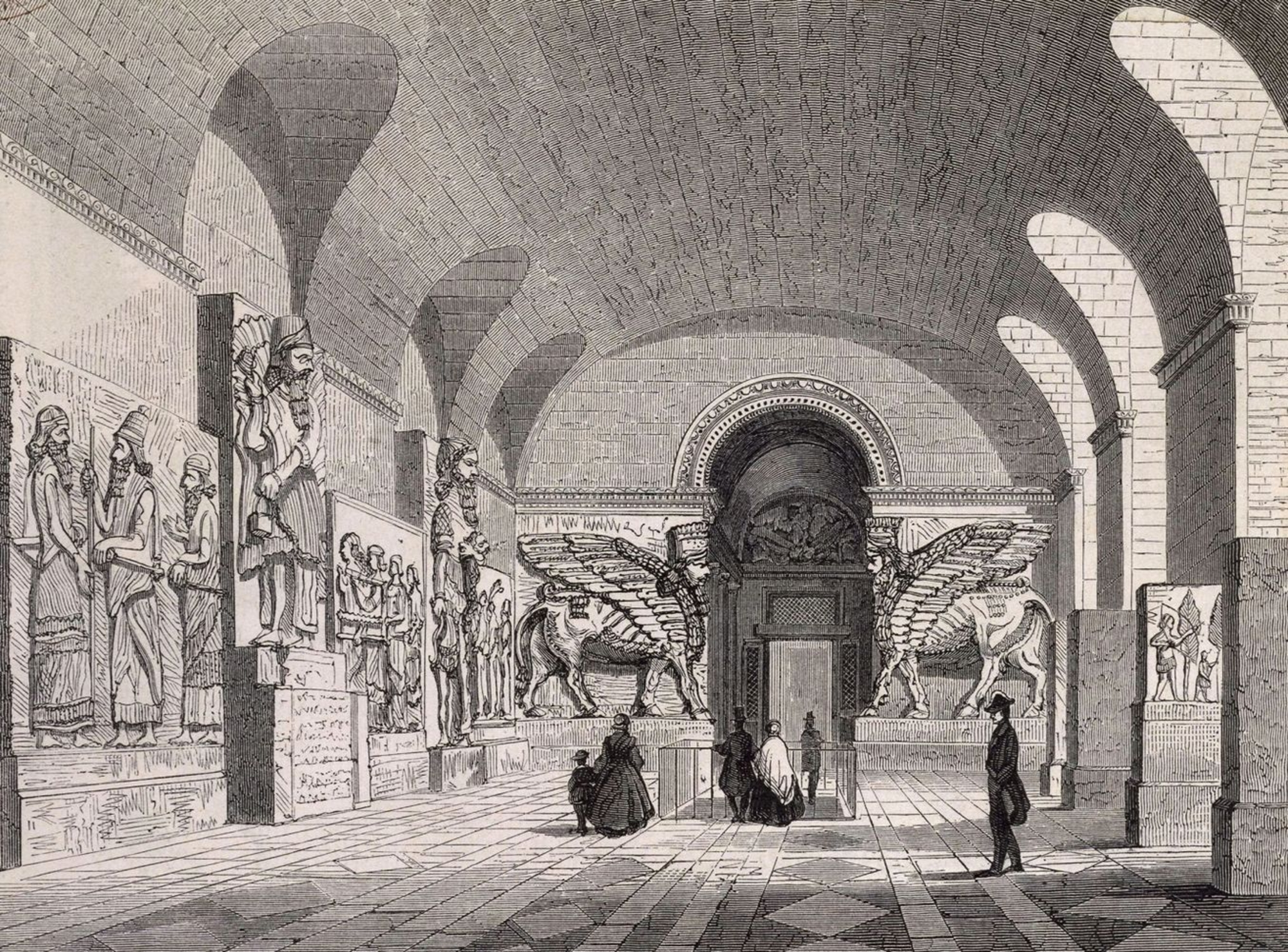
- Home
- The Assyrian museum
- The opening of the Assyrian museum at the Louvre
The first finds from Khorsabad, sent by Paul-Émile Botta, arrived at the Musée du Louvre in February 1847. They led to the creation of the Assyrian museum, inaugurated by King Louis-Philippe on 1st May 1847. Parisians were able to marvel at the finds from Sargon's palace and, after two millennia of oblivion, the Assyrian civilization was finally brought to light.
"The Ninevite Museum is open, and today we can finally appreciate the archaeological importance of the discoveries made by Mr. Flandin and Mr. Botta, and the heights reached by the art and civilisation of this people (...)"
(L’Illustration, 15 May 1847)
First Assyrian rooms
The Louvre was then divided into several specialised museums covering a wide variety of fields including the Museum of Antiquities, the Algerian Museum, and later the Mexican Museum and the Ethnographic Museum. The Assyrian museum was located at the northeast corner of the Cour carrée. Since it served as an archaeological repository for the discoveries made by French archaeologists in the Near East, the museum expanded rapidly. As soon as Victor Place’s convoy arrived, it was extended to the north of the Colonnade.
Adrien de Longpérier (1816-1882)
Adrien de Longpérier, then curator of antiquities and sculptures, was given responsibility for the Assyrian museum. A former employee of the Cabinet des médailles and an experienced numismatist, he was also interested in national archaeology, and in 1887 he helped set up the “museum of Celtic and Gallo-Roman antiquities”, today the Musée d’archéologie nationale. He carried out considerable museographical work at the Louvre and wrote the notice for the Assyrian museum in 1848 to better present the collection to the public.

